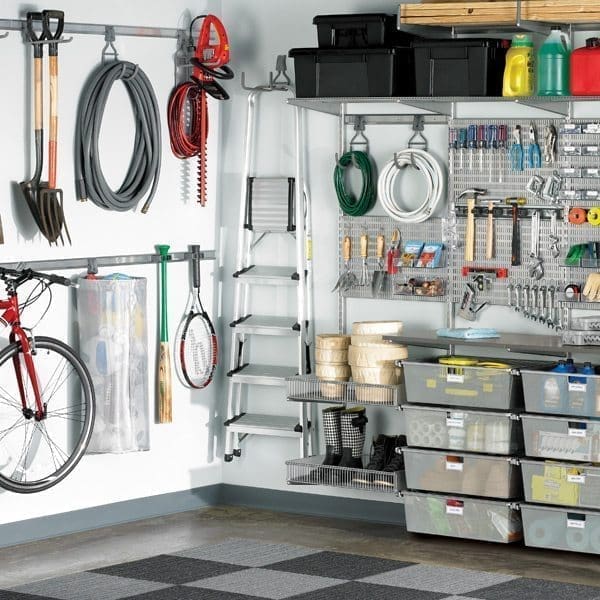This post may contain affiliate links for your convenience. If you click on the link and purchase the item, A Personal Organizer, LLC. may receive a small commission at no extra cost. All opinions remain our own. As an AmazonAssociate, A Personal Organizer, LLC earns from qualifying purchases.
Garage Organizing Tips
The garage is often the last place to be organized in a home. Much like many families have an “everything drawer” in the kitchen or home office, many garages end up serving as the “everything room” of the home.

Garages hold a seemingly endless list of household goods:
- Lawn and gardening equipment
- Household tools
- Ladders and step stools
- Car maintenance supplies
- Laundry machines and ironing equipment
- Holiday decorations
- Old paint and craft project supplies
- Family heirlooms
What’s missing? Your car!
Countless families are unable to park their car in their home’s garage because of all the clutter. Yet, a car is one of the biggest expenses for any household — it’s usually the second largest investment after a home mortgage. When you store your car in a garage, you help preserve the quality of its paint by protecting it from the elements: snow, ice, storms, bird droppings, etc. In addition, the vehicle’s fluids, such as the oil and coolant, will remain warmer in a garage and prevent long-term damage to the engine.
If that’s not enough to convince you to declutter your garage, think about how wonderful it would be to add roughly 500 square feet to your home — for free. Even if your garage isn’t heated or cooled, you can still utilize the space for activities beyond storage. Every bit of clutter that you don’t want prevents you from fully enjoying your home. A clutter-free garage could be used as a home gym, laundry room or craft area by simply clearing the space.
Here’s how you can organize and declutter your garage
1. Plan Ahead
Tackle storage first. List out categories or “families” of objects that you’d like to store. Here are a few ideas to help you get started:
- Luggage
- Sports equipment
- Bikes
- Camping gear
- Tools
- Paint and chemicals
- Holiday decorations
2. Visualize
Unless your garage is too packed for this step, look around and take in the space and imagine where things could go. Think about access and how easily you’d like to be able to retrieve specific things. It’s a good idea to place commonly used items nearest to the door or near an exit. For example, you may want to store household tools like a hammer and nails beside the door leading into the house. However, items that are used frequently, but are typically dirty or only used outdoors — lawn mowers, bikes, and sporting equipment — can be stored next to an exterior door or the garage door.
Is your garage packed to the brim? Go to Step 3 and then come back here.
3. Remove the Clutter
Now that you have a plan in mind, it’s time to get started with the organizing process. The first step is to sort through the items already in the garage and get rid of everything that’s damaged or unwanted. Depending on its quality, items can be donated, sold or simply thrown away. To make the process faster, carry a heavy-duty trash bag with you as you move around the space. If the weather is nice, open the garage door and utilize your driveway or lawn to remove everything from the garage. The clearer the space, the easier it will be to visualize, organize and return items to their new home.
4. Identify and Label Storage Areas
Once everything has been removed from your garage, clean, take detailed measurements and draw a rough sketch of the space. Use the categories you decided on to label shelving and floor space for specific categories or items. Use masking tape and permanent market to create clear labels so your family members will always be able to tell where an item should go.
5. Purchase the Correct Supplies
Wait until your garage is clear before you go to the store and buy storage containers or other items. That way, you’ll save money by only purchasing the things you really need. I suggest clear storage bins for most household goods because you’ll be able to quickly spot what you need. Label each bin carefully as well as the shelf or area on which it’s stored. Take full advantage of vertical space. In room permits, install racks along the walls to hold large bins, suitcases, bikes and other items.
Finally, be patient. Remember, decluttering and organizing a garage is a huge project. A garage that’s about half-full will take around 15–20 hours of work. If you can’t do everything in one day, break the job up into multiple parts.




